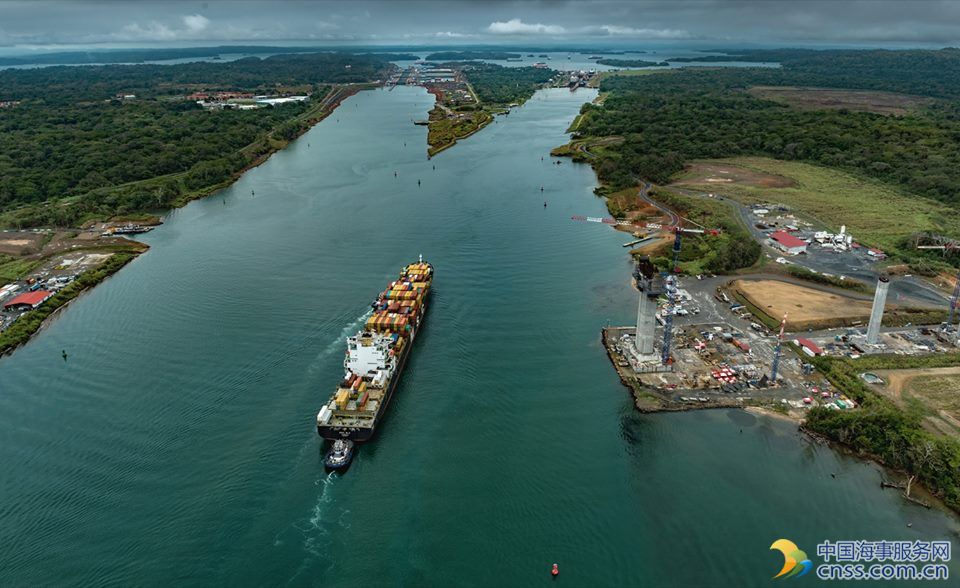Drewry: Upsizing Ships on Asia-USEC Trade Slow but Sure

The direction of travel on the Asia-USEC via Panama trade is unstoppably moving towards bigger ships and fewer services as the shipping industry gears up for the opening of the expanded Panama Canal, but the speed at which this process takes place will be restrained, according to UK-based shipping consultancy Drewry.
The two shipping alliances – CKHYE and G6 – have already laid out their plans to upgrade the size of ships used on the Asia-US East Coast via Panama route.
In line with those plans, the G6 Alliance will have the biggest ships on the trade from July when its new NYX service will deploy 10 units of 10,000 teu. However, the NYX service will replace two existing loops (NCE and the NYE/SCE Combo) that use ships of half that size, meaning the net increase in weekly nominal capacity will be negligible.
The CKYHE Alliance will make the biggest strides in capacity as it will upgrade three existing Panama services up to a maximum of 8,500 teu, as well as re-routing a Suez service through Panama. Mitigating things the alliance will suspend one service (AWE2) using 4,500 teu ships. As a result, CKYHE’s nominal capacity will be increased by nearly 14,000 teu a week.
“Based on the current projections shippers won’t see any significant difference in the Asia-USEC via Panama trade after July as the number of weekly services will remain at 14. The average size ship will increase by around 25% to 5,900 teu, but that figure is still well short of the 13,000-14,000 teu upper-limits the expanded Panama Canal will be able to accept,” Drewry said.
As disclosed, there will be nine weekly services using the old Panamax size ships from July, which provides plenty of scope for further upgrades but with demand for US East and Gulf coast services slowing Drewry expects that carriers will only do so in stages.
In addition, there are physical restrictions that will prevent carriers from rushing in with the biggest ships, the most obvious being the ongoing project to raise the Bayonne Bridge that restricts access to the port of New York/New Jersey and is not expected to be completed until mid-2019. Hence, the G6 Alliance’s new NYX service will presumably call at the Global Marine Terminal that doesn’t require a transit under the Bayonne Bridge.
The NYX ships will represent an upgrade on the current largest vessels calling at US East Coast ports, with 9,400 teu units from MSC on a Suez routed service from Asia being the current largest. At present the average size of ship from Asia to USEC via Suez is around 7,900 teu.
Another disincentive for carriers will be the shrinking freight rate differential that they are seeing for Asia-USEC services compared with Asia-USWC loops. At the peak of the West Coast slowdown last year spot rates for 40ft container from Asia to the East Coast where as much as USD 2,800 higher than to the West Coast, according to Drewry’s Container Freight Rate Insight. Since then spot rates on both legs have come down steeply and while EC rates remain about twice the price of those to the WC the differential is now lower than USD 1,000, Drewry concludes.
HEADLINES
- Do shipping markets want Biden or Trump for the win?
- All 18 crew safe after fire on Japanese-owned tanker off Singapore
- Singapore launching $44m co-investment initiative for maritime tech start-ups
- Cosco debuts Global Shipping Industry Chain Cooperation Initiative
- US warns of more shipping sanctions
- China continues seaport consolidation as Dalian offer goes unconditional